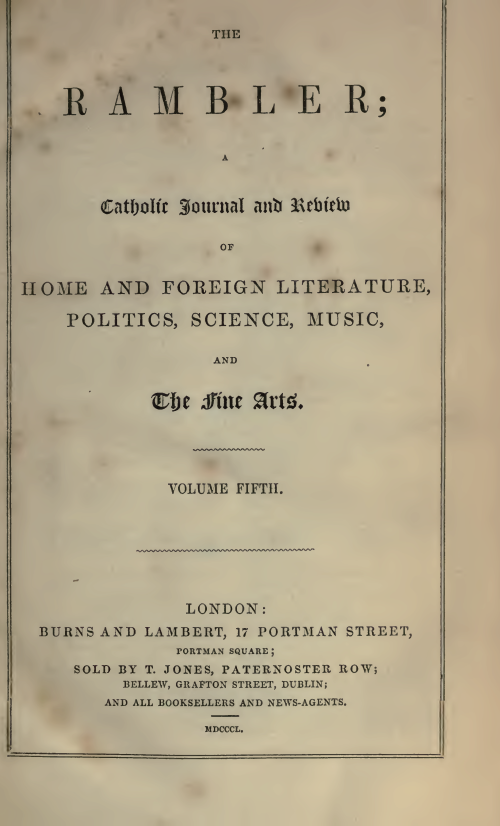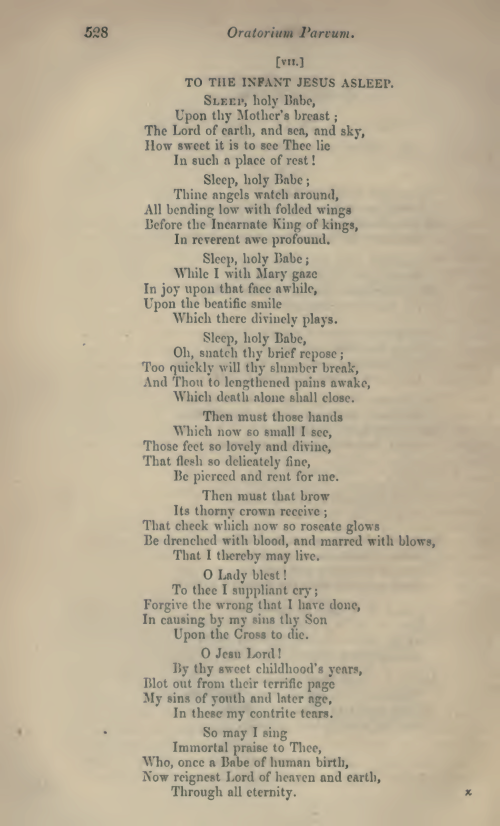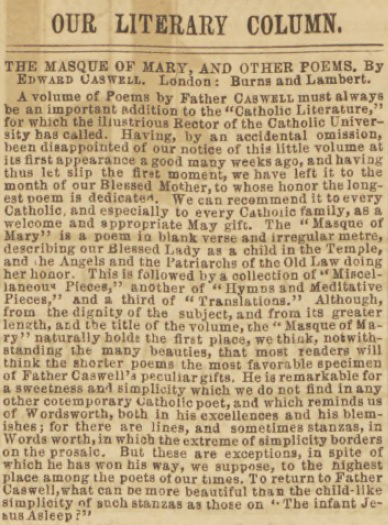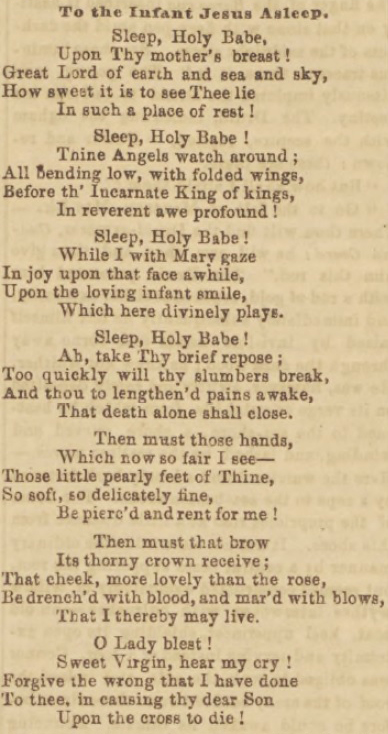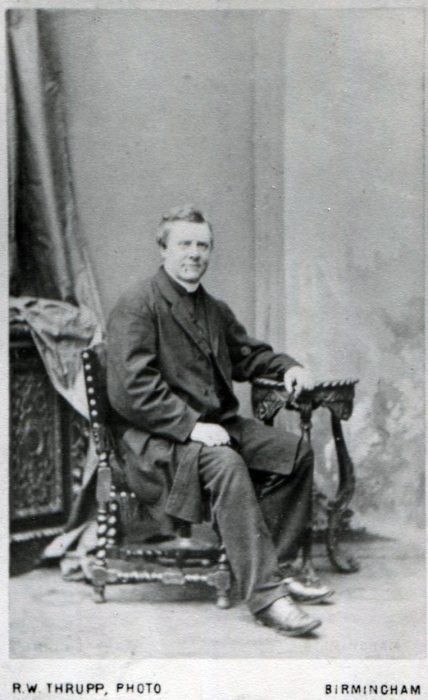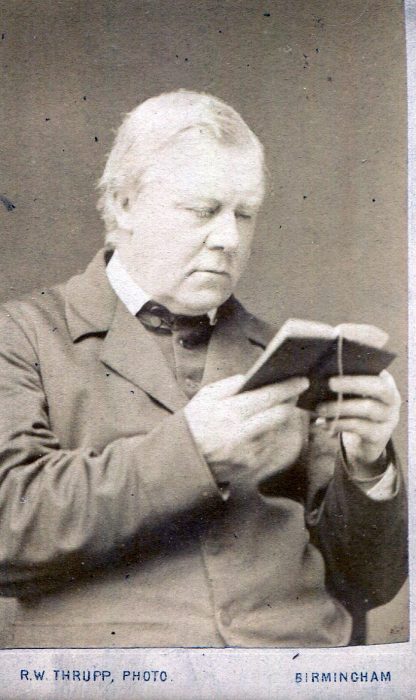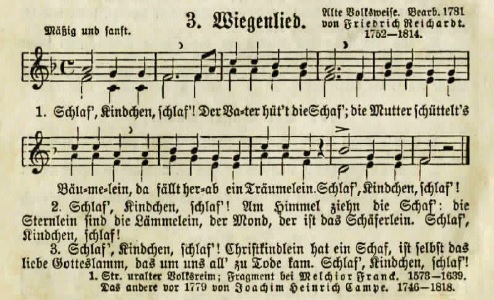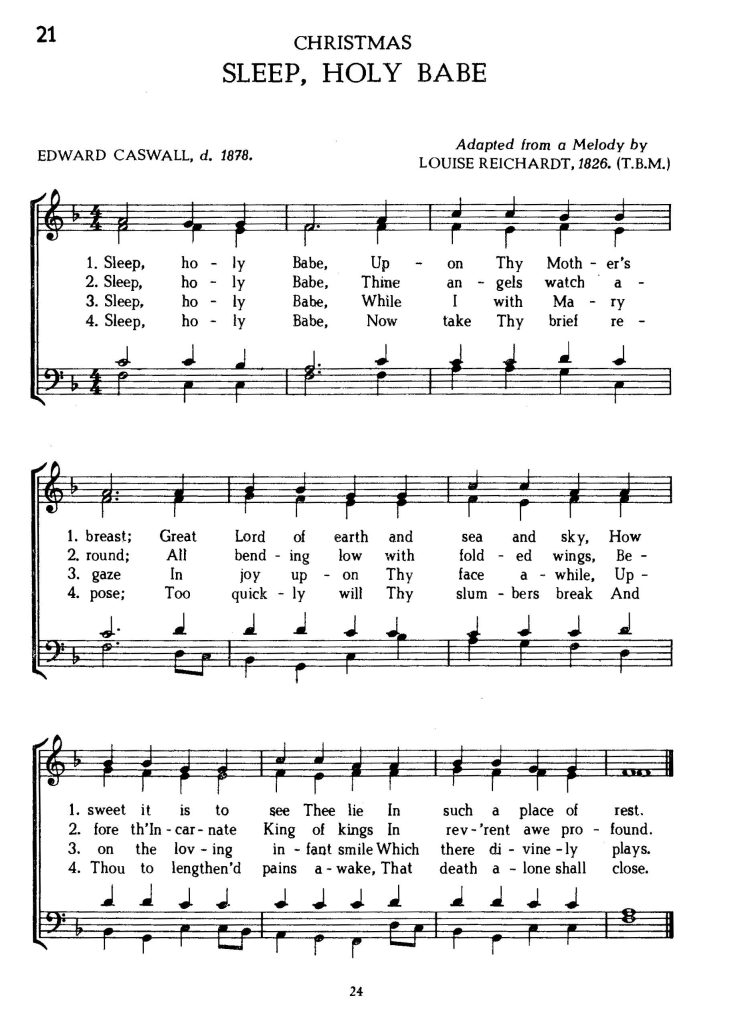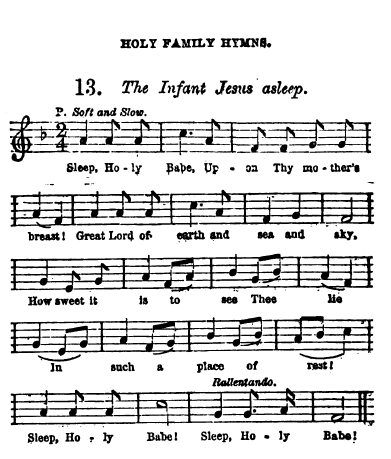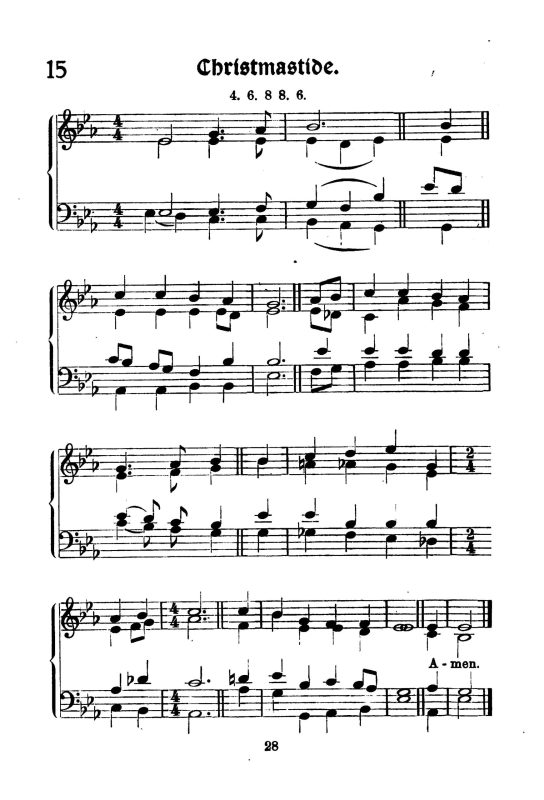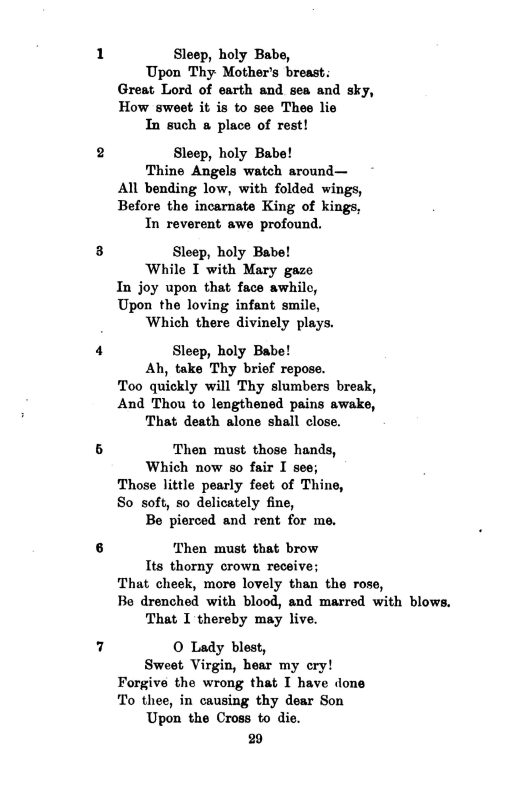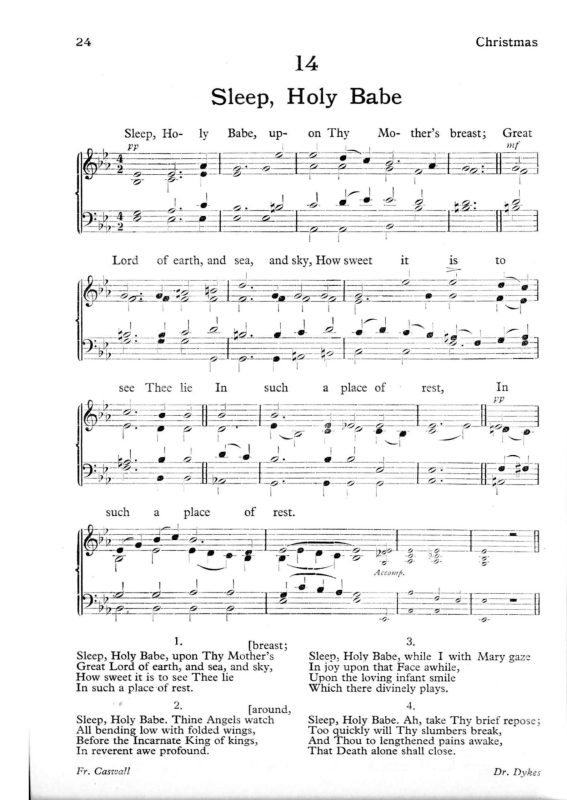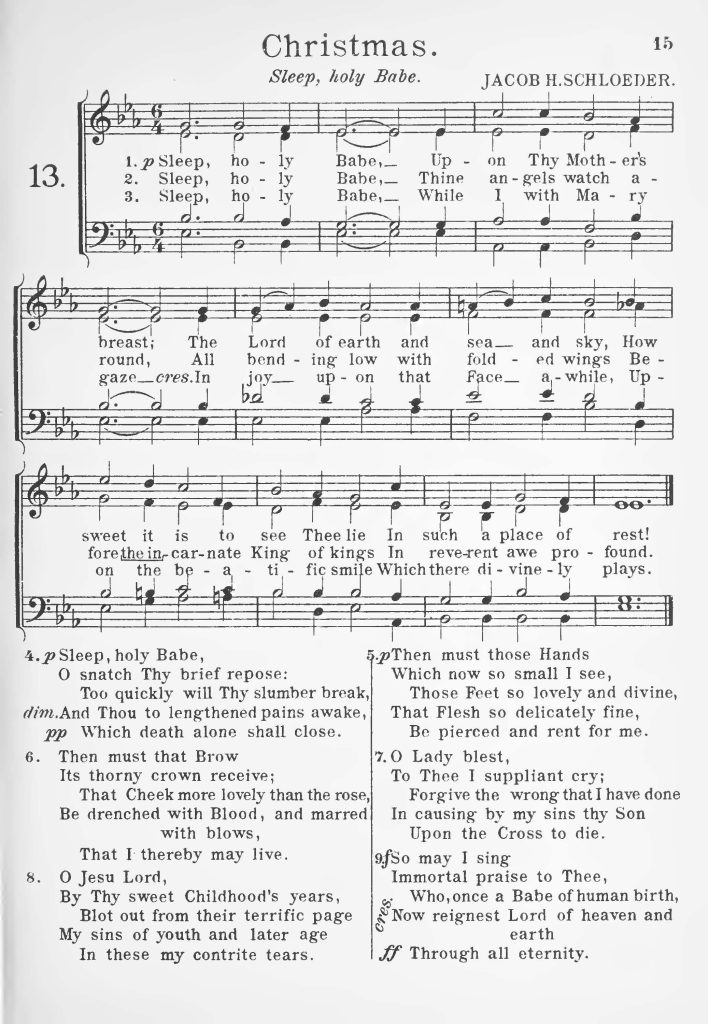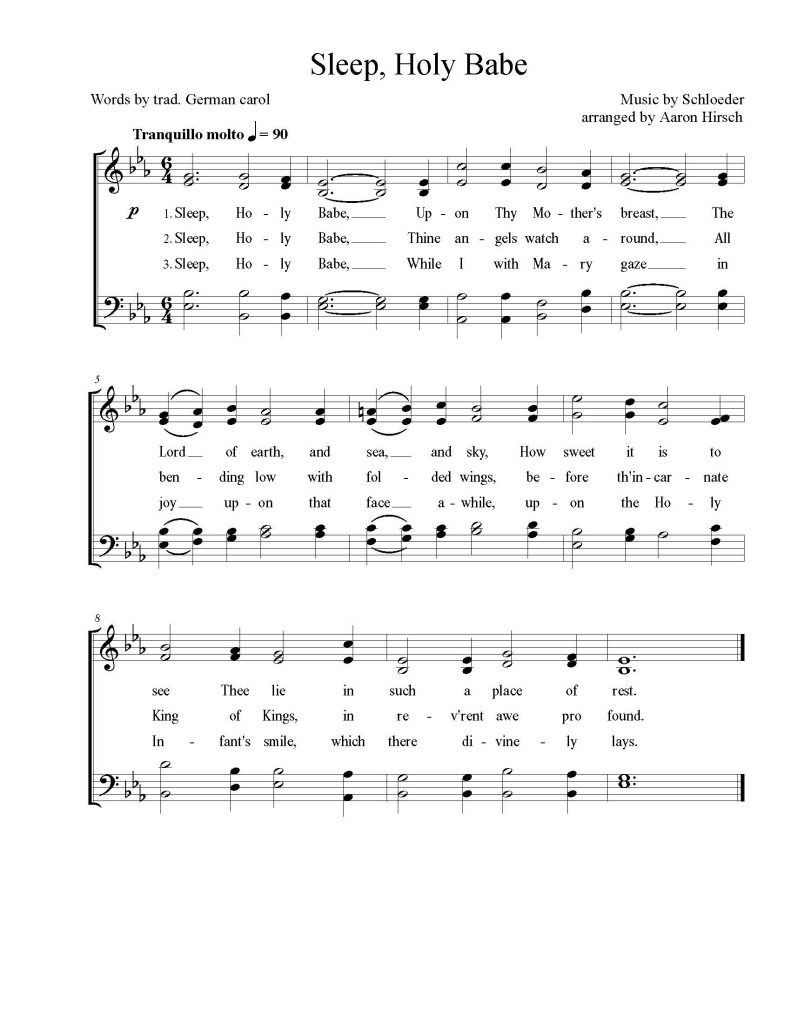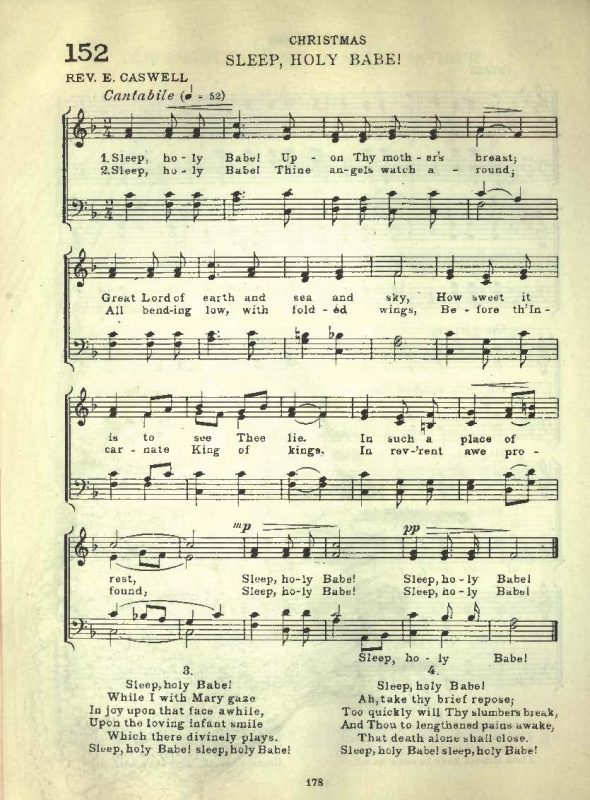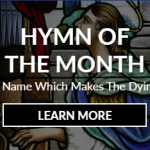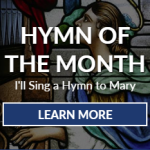Father Edward Caswall a Roman Catholic priest wrote the text of this hymn. The earliest occurrence of the hymn that could be located is in the Catholic journal THE RAMBLER published in 1850, and it is captioned To the Infant Jesus Asleep.
The hymn also appeared in a literary review column on page 2 of the June 5, 1858 edition of THE PILOT, a Boston and New York newspaper. This was a review of the recently published MASQUE OF MARY, AND OTHER POEMS by Father Edward Caswall. This review was originally published in the London Weekly Register.
Edward was a convert to Catholicism and was received into the Catholic Church on January 18, 1847, by Cardinal Charles Acton (1803-1847) at the Venerable English College in Rome. In attendance was Father John Henry Newman, Father Thomas Grant the Rector of the College, along with several others who had come with Edward that day. At this time Edward was married to Louisa Mary Stuart Walker who was also received into the Church of Rome a week later on January 25, 1847.
During the summer of 1849, England was in the grips of a vicious cholera epidemic which persisted even into the autumn season. Edward and Louisa had gone to stay at Torquay, a sea side resort. On September 14, early in the morning, Edward left for Mass and on his return from church he found Louisa and the landlady of the lodge where they were staying deathly ill with the cholera and by 11 o’clock that night Louisa Caswall was dead.
Edward was devastated and grief stricken as one could only imagine. He immediately sent word to Father Newman, and they arranged that Louisa’s Requiem Mass and burial would take place at St. Wilfrid’s in Cotton, Staffordshire. The pastor of St. Wilfrid’s was Father Frederick William Faber, a fellow convert and student at Oxford University. It is unclear if Edward or Father Faber knew each other before this time but certainly, they became acquainted at this Mass. Father Newman celebrated the Mass and Father Henry Formby a longtime friend whom Edward knew from their days at Brasenose College, Oxford, a fellow convert, and priest at the Oratory, sang the Dies Irae.
In the following year around February 1850, the Birmingham Oratory was established at its present address on Hagley Road in Edgbaston. It is also at this time that Edward was admitted as a novice to the Oratory and three days later he received the tonsure and was admitted to Minor Orders. Then on December 21, 1850 the anniversary of his wedding to Louisa, he was ordained as a subdeacon and a year later almost to the day on December 20, 1851 he was ordained a deacon. By April of 1852, the building in Edgbaston had been completed and all the Oratorians took up residence at the new location. On September 18, 1852, Deacon Edward Caswall along with Deacon Henry Bittleston were ordained as Catholic priest.
Father Edward Caswall – Courtesy of the Birmingham Oratory
Throughout his life, Father Caswall was a prolific writer. During his time at Brasenose College, a constituent college of Oxford University he published a number of literary works including The Oxonian – a series of papers on University life written with a humorist point of view. This was followed by his Pluck Examination Papers which he later published in a book The Art of Pluck – the caricature of these works was to enlighten the undergraduate on how to fail his examinations and in the lingo of the University to get plucked. The ability to write in satire and at the same time convey a moral point was a gift that Father Caswall possessed. These and several other publications where enormously successful and provided him a steady income which he would benefit from during his college days and in the future.
During his conversion journey to Rome, Father Caswall kept a journal that has remained unpublished, and its existence known only to a handful of people. He was a man of meticulous detail and observation and his eyewitness accounts of Roman Catholicism during his visit to Ireland in the summer of 1846 proved to be a turning point in his life.
On one occasion in 1846, on a summer evening, he witnessed a small group of poor worshipers praying in a Catholic chapel in Ireland. He observed that one person said the Lord’s Prayer as far as, as it is in heaven, and the others began at, give us this day our daily bread. Then the same person began another prayer, and the others began Holy Mary, and everything was in English. It was the first time he had heard any devotion to Our Blessed Mother and before the evening was over, he was kneeling down with them. Any Anglican preconceptions of idolatry left him, and he was consumed with the expression of love and humility of these poor men and women. From that point onward, he became devoted to the Rosary.
Almost two years after he joined the Catholic Church, Father Caswall published his first collection of hymns in 1849, the LYRA CATHOLICA, containing translations of all Breviary and Missal hymns of the Roman Breviary. Father Caswall was always working for the education of the poor and especially the children even during his curacy at Stratford-sub-Castle near Salisbury. A question that plagued him during his conversion journey was how the Latin liturgy could have any meaning for the average Catholic let alone the poor and uneducated.
During the summer of 1846 while in Ireland he attended a Requiem Mass for Pope Gregory XVI who had recently died. He was concerned and frustrated because he couldn’t follow the liturgy. How is it that the poor and uneducated understand the Latin liturgy and an Oxford graduate in the classics is lost? This was the underlying reason for his translations of the Roman Breviary – to publish in the English language for anyone who could read or to pray in private the Divine Office.
Father Caswall remained at the Birmingham Oratory until his death on January 2, 1878. Father Edward Caswall was named, along with Father Joseph Gordon and Father Ambrose St John, as one of the three Oratorians whom Newman deemed his greatest friends and most loyal and devoted laborer’s in St Philip’s vineyard.
There is so much more that could be written about Father Caswall but that is beyond the scope of this short write-up. His contributions to Catholic hymnody include such favorites as: At The Cross Her Station Keeping; Come Holy Ghost Creator Blest; Jesus the very thought of Thee; Joseph Our Certain Hope in Life; Joseph Pure Spouse; Sing My Tongue the Savior’s Glory; Ye Sons and Daughters of the Lord; Hark an Awful Voice is Sounding; Dear Maker of the Starry Skies; O Jesus Christ Remember; O Saving Victim Opening Wide; The Dawn Was Purpling O’re the Sky; See Amid the Winter Snow; When Morning Guilds the Skies; What a Sea of Tears and Sorrows; This is the Image of Our Queen; and many more hymns. He published several hymn books including LYRA CATHOLICA, 1849; the MASQUE OF MARY AND OTHER POEMS, 1858; and HYMNS AND POEMS, 1873.
Some of the details above were used with permission and were taken from EDWARD CASWALL: NEWMAN’S BROTHER AND FRIEND written by Nancy Marie de Flon and published by Gracewing in 2005. Nancy’s book is a wonderful biography of Father Caswall’s life and journey to Catholicism. An earlier biography of Edward Caswall was written by Edward Bellasis (1800-1873) an English lawyer and convert to Catholicism in the new edition of HYMNS AND POEMS published in 1908.
The Melodies
Thirteen melodies have been located for this hymn but only two were widely used. The other melodies appeared only once or twice in Catholic hymnals and quickly faded away. Four of these melodies are featured in this write-up.
The earliest and the most widely used melody first appeared in the Catholic hymnal EASY HYMNS AND SONGS FOR CATHOLIC SCHOOLS, 1851 compiled by Henri F. Hemy (1818-1888). It is a Wiegenlied, literally cradle song or lullaby dated 1781 from Wilhelm Kothe’s GESANGBUCH FÜR KATHOLISCHE SCHULEN, 1882. The German text are not the words for the hymn Sleep, Holy Babe.
This melody is found in these Catholic hymnals: WESTMINSTER HYMNAL, 1912 and 1939; CROWN HYMNAL, 1913; ST. GREGORY’S HYMNAL, 1920 and 1947; ST. BASIL’S HYMNAL, 1925; THE CATHOLIC SCHOOL HYMNAL, 1930; LAUDATE CHOIR MANUAL, 1942; SING TO THE LORD, 1944; PIUS X HYMNAL, 1953; MEDIATOR DIE HYMNAL, 1955; the NEW ST. BASIL HYMNAL, 1958; the CATHOLIC HYMNAL, 1966; and the ADOREMUS HYMNAL, 2011.
This melody is often attributed to Louise Reichardt who died in 1826. She is not the composer but instead is the daughter of Johann Friedrich Reichardt (1752-1814) who is the composer of the hymn. Both father and daughter along with her mother Juliane were composers.
The second melody appeared in the HOLY FAMILY HYMNS, 1860 published by Richardson and Son in London, Dublin, and Derby. The melody is attributed to Father Louis Lambillotte, S.J., (1796-1855) a French Jesuit Catholic priest. This melody also appeared in the 1883 and 1897 PAROCHIAL HYMN BOOK’s compiled by Father Antoine Police, S.M., and published in London, New York, and Dublin. It also appeared in the ST. BASIL’S HYMNAL from 1918 through 1953. The ST. BASIL’S HYMNAL was the most widely used Catholic hymnal and was published throughout the United States and Canada. Father Lambillotte is well known for the melodies of Come Holy Ghost Creator Blest; On This Day, O Beautiful Mother, and ‘Tis the Month of Our Mother.
The third melody is attributed to the Birmingham Oratory and can be found in THE BOOK OF HYMNS WITH TUNES, 1913 compiled by Dom Samuel Gregory Ould, O.S.B. (1864-1939). He was an organist, composer, and hymnologist. The majority of the hymn translations in this collection belong to Father Caswall.
John B. Dykes (1823-1876) composed the fourth melody, and it appeared in A DAILY HYMN BOOK, 1932 and 1948. His melody is also found in a number of Christmas carol collections starting around the 1870s. John Dykes was Cambridge educated and was ordained in the Church of England in 1847.
Another melody appeared in the in the 1905 and 1933 editions of the CATHOLIC CHURCH HYMNAL compiled by Augustus E. Tozer (1857-1910), this melody was composed by Jacob H. Schloeder (1865-1919). Jacob was a composer of church music and the organist for the Church of Our Lady of Mount Carmel in Manhattan for twenty-seven years. This particular melody was used at St Mary, Help of Christians in Sleepy Eye, Minnesota where it was sung every year for nearly a century. It was arranged by Aaron Hirsch.
The other melodies mentioned earlier were composed by the following:
- From the CROWN OF JESUS MUSIC, 1864 compiled by Henri F. Hemy (1818-1888) is a melody by Wolfgang Amadeus Mozart (1756-1791).
- In the POPULAR HYMN AND TUNE BOOK, 1868 compiled by Frederick Westlake there are two melodies. One by Frederick Westlake (1840-1898) and the other by John Francis Barnett (1837-1916).
- A melody by an unknown composer is found in the 1885 and 1925 MANUAL OF SELECT CATHOLIC HYMNS AND DEVOTIONS, compiled by Father P. M. Colonel, C.SS.R.
- From the ARUNDLE HYMNAL, 1905 there are two melodies, an ancient Catholic melody, and a melody by Walter Austin (1841-1912), one of the editors of the hymnal.
- In MOTETS AND HYMNS – Used by the Pupils of the Sacred Heart, 1908 a melody by a Sister of the Sacred Heart from the Convent of the Sacred Heart, Roehampton.
- From the 1954 ALVERNO HYMNAL PART 1, compiled by Sister Mary Cherubim, O.S.F. (1886-1977), a melody composed by Sister Mary Cherubim. Copies of these melodies can be obtained by contacting Don Howe.
Reflection
For me, the melody attributed by Father Louis Lambillotte is the humblest and most moving of all the melodies. At St. Mary’s when I sang in the choir (1977-2005) this hymn was always part of our Christmas program and often times would be sung during Communion. We used the arrangement from the 1918 ST. BASIL’S HYMNAL.
When I meditate on the verses, I can see certain allusions to verses from the bible, Upon Thy mother’s breast, the Great Lord of earth, sea, and sky. Psalm 22:9-10, and Luke 11:27. I am reminded of the Annunciation and the Word made flesh in the phrase, Before the Incarnate King of kings, Luke 1: 26-38.
I am drawn into the joy of that Holy night in the third verse, While I with Mary gaze, In joy upon that face awhile, and with somber words, the foreshadowing of Good Friday unfolds, Ah, take thy brief repose, Too quickly will Thy slumber break, And Thou to lengthened pains awake, that death alone shall close.
Everyone who meditates on the verses may find other biblical references, what bible verses can you find?
Below is a selection of the four melodies described above which have been composed for the hymn. One of the recordings is from St. Mary’s Choir – Christmas Eve Midnight Mass from 1985. Nearly forty years have passed and my friends in the choir still sound wonderful! The others are computer generated sound files. The tempo is approximate but should provide the listener a good sense of what the hymn sounds like.
A special thank you to Peter Meggison producer of the Devotional Hymns Project for allowing me to link to new recordings by the choristers of St. Peter’s Church in Columbia, South Carolina and the beautiful recording of Sleep, Holy Babe.
Also, On December 24, 2022 at the Midnight Mass, the Choir and Orchestra of the Cincinnati Oratory, Old St. Mary’s Church, Cincinnati, Ohio, along with the twenty-one member Laudate Pueri Children’s Schola Cantorum sang Sleep, Holy Babe. A special thank you to Sean Connolly who is the Director / Organist of the Oratory Choir who provided a recording of this lovely hymn. Please take a moment to read more about Choir and Orchestra of the Cincinnati Oratory.

